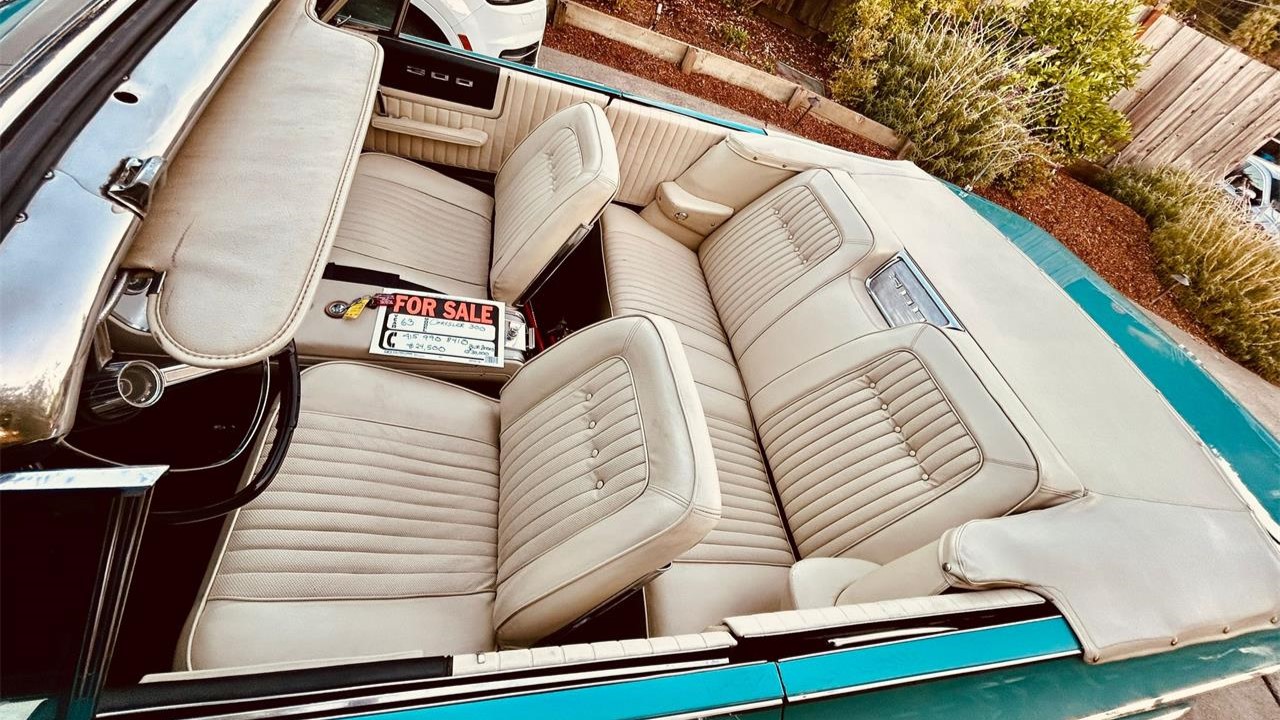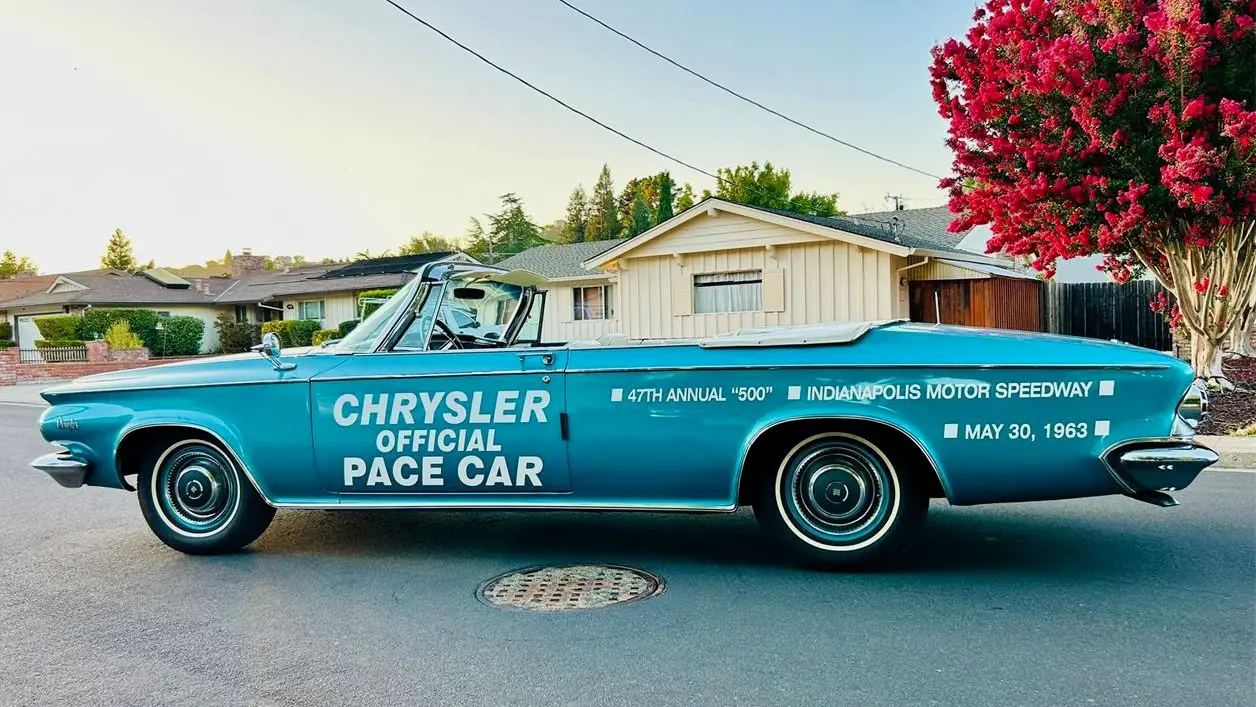Detroit has a history of finding a good thing and then ruining its equity. In more recent years, it could be argued that the four-door Dodge Charger and Ford Mustang Mach-E qualify, but our Pick of the Day may be the most famous postwar example of all: the Chrysler 300. This 1963 Chrysler 300 Pace Setter convertible is listed on ClassicCars.com by a private seller in Novato, California. (Click the link to view the listing.)
The genesis of the 300 can be found in the ultimate banker’s hot rod of the 1950s: the Chrysler letter-series. Starting in 1955, the C-300’s 300-horsepower 331ci was tops in the industry and its styling – a combination of Chrysler Forward Look with an Imperial grille – was spot-on. It was a “bomb” if there ever was one back in the day, only to be surpassed by subsequent editions starting with the 300-B for 1956, which offered 340 horsepower or an optional 354-horse version for a true one horsepower per cubic inch. When the 1959 300-E came along, it was part of a Chrysler Corporation wave to replace the Hemi with a modern, less complicated engine. Measuring 413ci, the 300-E didn’t lose anything thanks to its 380 horsepower. That fell by five in 1960 with the 300-F, but an optional 400-horse version with a four-speed made it the most powerful 300 letter-car ever.

Or did it? The 1962 300-H came with a 413/380, but ram-induction manifolds raised it to 405. Considering the wheelbase shrunk by four inches, this likely was the fastest 300 letter-car yet. It also was the rarest up to that point, no doubt thanks to the introduction of what’s commonly called the 300 Sport, a 300 non-letter car situated between the Newport and New Yorker. Available as a two- or four-door hardtop, or a convertible, the 1962 300 shared its grille with the 300-J but was powered by a 383 two-barrel, although you could opt for several 413s, including the one powering the 300-H. Cannibal, thy name is 300!

Chrysler redesigned its cars in 1963, ridding the marque of 1950s-esque goofiness and mainstreaming the styling into something quite handsome. Both the 300-J and 300 continued, with the latter being chosen as the pace car for the Indianapolis 500. These “Pace Setter”-edition 300s were painted in Pace Setter Blue and came with an Alabaster interior and a matching top. Of special note was a squarish steering wheel.

It is said that 1,861 pace cars convertibles were built, making this 1963 Chrysler 300 Pace Setter an unusual rarity that only pales in comparison to one of the actual parade cars. Powered by the 340-horsepower 413, this vehicle looks great but could use some love because although everything works, the “A/C has not been filled and tested, clock does not keep accurate time, light in trunk does not work, and [there is a] slight transmission leak between transmission and engine.” Additionally, “rear passenger side arm rest has a small tear.” All of these things are easy fixes to a skilled enthusiast.

Updated items include a rebuilt carburetor, the wiring harness, and brakes, and a new inline transmission filter, clutch cooling fan, and more, according to the seller. The potential of this unusual near-luxury convertible cruiser is strong. It already has great looks, a fine color, and limited-edition status. For $24,500 OBO, this Chrysler is a fine find.
Click here for this ClassicCars.com Pick of the Day.

Comments are closed